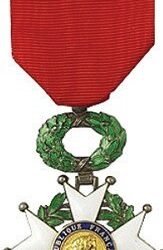Two Chinese banks have
agreed to finance con-
struction of the long-stalled superhighway from Tehran to the Caspian.
The Mehr news agency quoted Deputy Transport Minister Masud Rahnama as saying a contract was signed with the two banks last Wednesday.
The announcement, however, rather pointedly failed either to identify the banks by name or to say how much money was contained in the loan.
Rahnama said French banks backed out of financing the highway as a result of economic sanctions. He said the new deal with the Chinese banks proved that sanctions were ineffective and that Iran can always find suitable ways to finance its development projects.
However, back in August 2002, the contract for the first phase of the project was taken away from the Pasdaran and given to China. An announcement at that time said China would capitalize the first phase of the work at $180 million, which loan was to be re-paid over 12 years. The interest rate was not revealed.
Seyyed Mostafa Miri, the project supervisor who announced the 2002 agreement with China, said at the time that Iran lacked the technology to complete the project on its own. The highway involves multiple tunnels and bridges to straighten the route and shorten the trip.
The four-lane super-highway is designed to replace the Chalus Road, the winding mountain pathway used by car-owning Tehranis to reach the Caspian beaches. The Chalus Road is subject frequent rockslides in the summer and avalanches in the winter.
As well as being safer, the Tehran-North highway will eventually slash driving time. The section from Firuzkuh to Qaemshahr is now 92 kilometers (57 miles) of winding, two-lane roadway with few tunnels. The new highway will be a straight 32-kilometer (20-mile), four-lane highway with many long tunnels.
This is a major project for the regime, which assigned it to the Pasdaran. But in 2002, without fanfare or explanation, it was taken from the Pasdaran and turned over to a Chinese contractor.
In the early 1990s, the Pasdaran were put in charge of building the railway link from Mashhad to Turkmenistan. When that project bogged down, the Pasdaran were also quietly removed and another contractor put in charge.
While it is commonplace to hear that the Pasdar construction arm is dominating the construction business in Iran, the regime is clearly not all that pleased with the Pasdaran’s skill on big projects. And the Pasdaran also lack the political clout to prevent the organization from being booted off big projects for lack of performance.
The highway project through the mountains was designed under the Shah and canceled after the revolution because it was seen as little more than a benefit for Tehran’s wealthy who vacationed on the Caspian coast. When it was resurrected in 1997, it was touted instead as a key transport link to Central Asia. But it still goes to the Caspian Sea resorts.
In 1997, the government said the highway would be completed in 2006.























